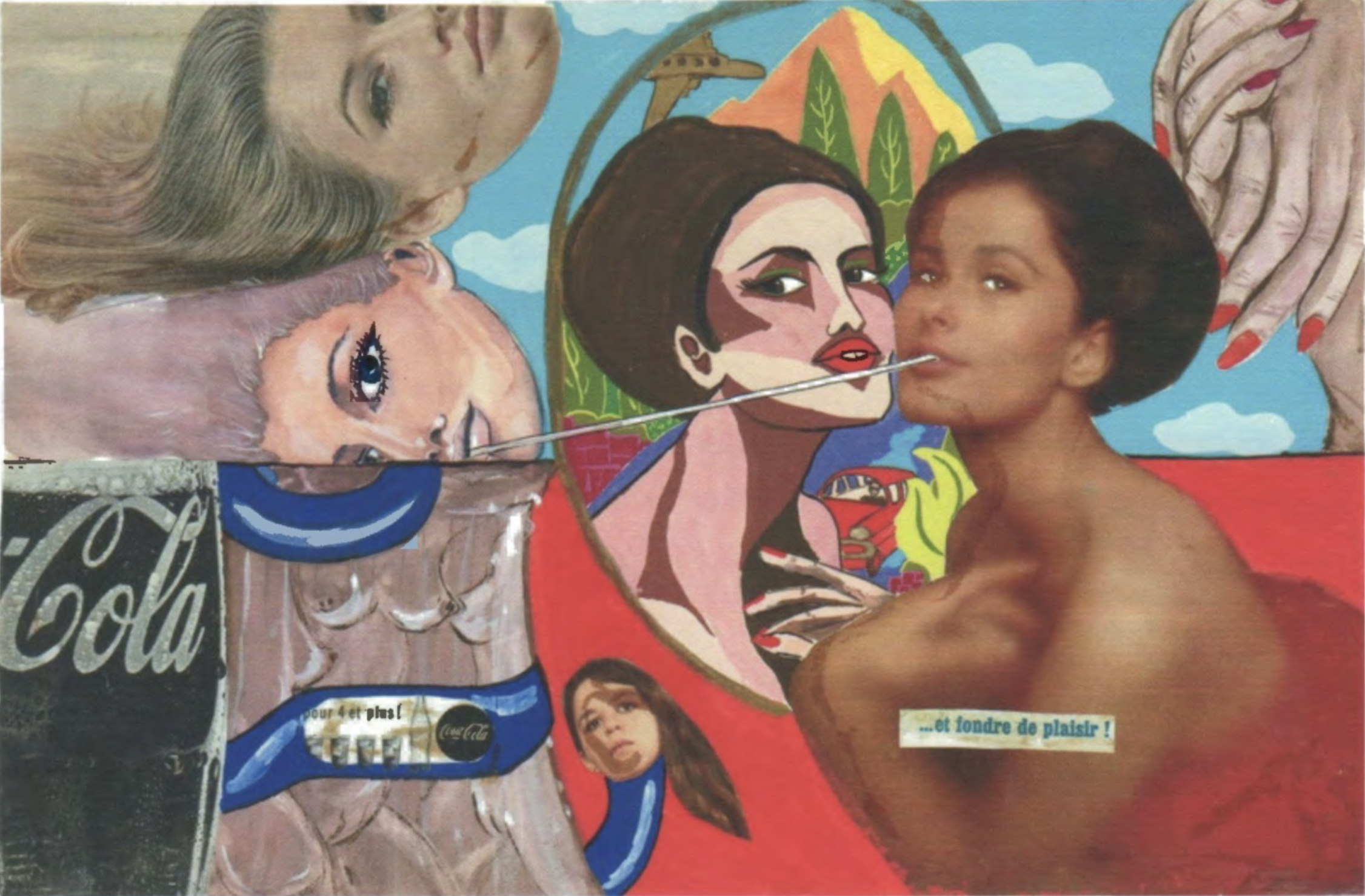→ PAST
EXHIBITION
Evelyne Axell: Body Double
Curated by
Anke Kempkes & Krzysztof Kościuczuk
With Special Participation of
Sylvie Fleury
1 August 2020 – 22 May 2021

Muzeum Susch presents Body Double, a retrospective exhibition of the Belgian Pop-Surrealist Evelyne Axell (1935-1972). With her original feminist approach in the 1960s Axell became one of the pioneers of Pop Art in Europe. Her distinct body of work is populated by an all-female universe, transcending the established iconography of Pop Art at the time and reclaiming the discourse of women’s sexuality.
Evelyne Axell’s career was tragically cut short by her untimely death in a car accident, at the early age of 37. Subsequently, her contribution to early feminist art and Pop Art was left out of the dominant narrative of art history, alongside her fellow contemporaries such as Pauline Boty, Rosalind Drexler, Kiki Kogelnik, and Dorothy Iannone, who have received a long overdue recognition only in recent years.
Co-curated by Anke Kempkes, international curator, art historian and art critic and Krzysztof Kościuczuk, artistic director of Muzeum Susch, this exhibition will present an overall of sixty exhibits spanning the broad spectrum of the artist’s entire oeuvre. Body Double brings together a large selection of collages, drawings, relief paintings, sculptures, filmic and photographic works - many of which have not been on view in decades. Axell experimented with novel artificial materials, such as her signature technique of car enamel paint on plastic. This exhibition is the largest museum retrospective of Axell’s work staged outside of her native Belgium, after an exhibition organized at Museum Abteiberg, Mönchengladbach in 2011.
As a special contribution, the exhibition features the prominent installation Marcel et Robert (2009) by Swiss artist Sylvie Fleury, entering into a cross-generational iconographic dialogue with Axell’s work. The rotating disk forming the base of Fleury’s work is designed as a giant Pop-coloured target mirroring the concentric composition in Axell’s painting The Wall of Sound (1966).

Born in Belgium in 1935, Evelyne Axell began her career as a charismatic theatre and film actress. She also authored the script for the 1963 movie Le Crocodile en Peluche, which portrays the prejudice faced by a multi-ethnic couple in Brussels as the Belgian colonial rule was coming to an end in the Congo.
Taught for one year by the Belgian Surrealist René Magritte, Axell abandoned acting and turned to painting in 1964. She processed the contemporary vocabulary of Pop Art through a feminist reading of Surrealism expanding the radical legacy of her female Surrealist forerunners. Axell’s daring work was met with derision by the male-dominated scene of art critics at the time, which prompted the artist to sign her works solely with her last name ‘Axell’ to elude any gendered associations, a move shared by many female artists and writers in the first half of the 20th century.
Body Double highlights various political themes in Axell’s work, situating her iconography in the international movements of the 1960s and early 70s. As an active witness of the era of sexual liberation, Axell focused on a female body freed from past conventions of depicting femininity. Throughout her work, Axell forged a signature iconography of empowered female nudes inhabiting the sphere of utopian homosociality. In her only public interview in 1969, Axell stated, ‘…The most extraordinary beings I ever met were almost all women, I find women most exquisite. They are everything at once: voluptuousness, luxury, frivolity, tenderness, courage, greed and total selflessness. That is to say the synthesis of the weaknesses and strengths of mankind’.
The exhibition Body Double highlights the recurring motif of ‘the double’ in Axell’s compositions. Frequently based on the artist’s own image, identical female nudes appear as kindred gatekeepers gracing portals to a territory of unbeknown promises. Fragmented portraits impart the condition of the female ‘split self’. There are also female ‘homoerotic twins’ – typically absorbed in an embrace, a kiss, or in explicit love-making. Mirrored multi-ethnic female nudes - as in Axell’s cinematic experiment Noire et Blanche (1966/7) - constitute yet another aspect of the ‘double’, resonating with the nascent post-colonial emancipation and the ‘Black is Beautiful’ cultural pride manifestations during the Civil Rights movement at the time which Axell supported.

In the wake of the May ‘68 events Axell was – alongside fellow artist Marcel Broodthaers – in the frontline of counter-cultural activities in the Belgian art scene. In 1970 she joined the local campaign against the imprisonment of the U.S. feminist activist and Marxist thinker Angela Davis, one of Axell’s female idols to whom she dedicated two portraits.
Another aspect of ‘the double’ in Axell’s work appears in her vision of the ‘bio-botanique’ (Axell, 1970): exotic animals become alter egos, tropical vegetation consumes the body, and surreal beastly hybrids inhabit an alternative sphere of ‘bio-cultural companionship’. In the devouring embrace of the Le Homard Amoureux (Lobster in Love, 1967) the shape of the female nude merges into a human-crustacean union. Axell explores this new universe ruled by the dynamics of metamorphosis in her early 1970s ‘Paradise’ series where the female figure is dissolving in the composition – ‘Gradually she loses her voice. Then memory. And, finally, the reason’ (Axell, Poem, 1972). She erotically unites with plants and animals and is transformed into a botanical entity.
The rich iconography of the Body Double culminates in one of Axell’s most prominent works La Grande Sortie dans l’Espace (The Great Journey into Outer Space, 1967), a futuristic vision of a pagan dance where identical cosmonautic nudes float in an abstract space: a zone ruled by female sensuality. It is the artist’s Arcadian vision of a joyful, anti-authoritarian future dimension.
Evelyne Axell’s work remains highly evocative today in its transgressive iconography, feminist agenda and utopian outlook.